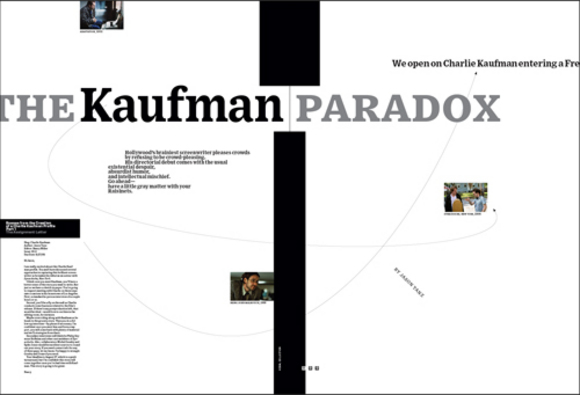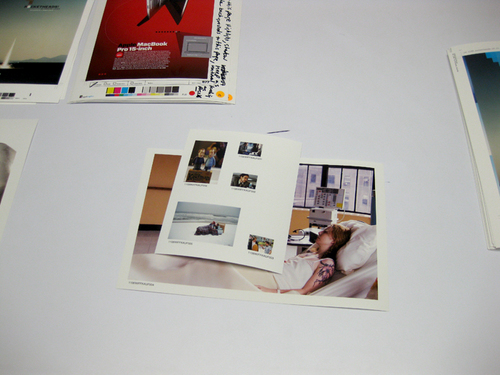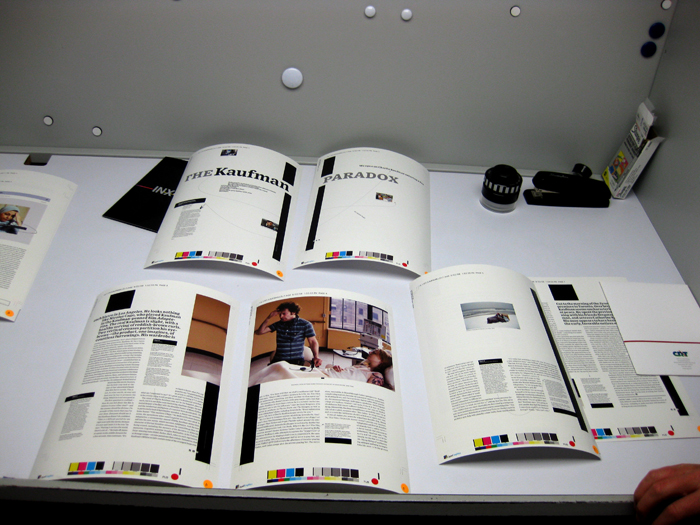Design
09.24.08
Part 26: The Final Layout
 Now that the back-and-forth with the hed and dek had subsided (settling on The Kaufman Paradox), I looked to making my final moves with the layout. Normally, I'd like more time to consider a design more carefully, but we had to make do with the remaining time we had. I took into consideration the pacing of the November feature
well and the positioning of this story at the end of the magazine. It
was definitely calling for a more impactful typographic hit since the well lacked a forceful piece of design done with type only, let alone big type. True,
it's a cliché with designers, the "just make the type huge" move, but
in this case, I felt like it was warranted. So I made the headline larger and the dek a bit smaller, looking for awkwardness in the way I ragged the copy.
Now that the back-and-forth with the hed and dek had subsided (settling on The Kaufman Paradox), I looked to making my final moves with the layout. Normally, I'd like more time to consider a design more carefully, but we had to make do with the remaining time we had. I took into consideration the pacing of the November feature
well and the positioning of this story at the end of the magazine. It
was definitely calling for a more impactful typographic hit since the well lacked a forceful piece of design done with type only, let alone big type. True,
it's a cliché with designers, the "just make the type huge" move, but
in this case, I felt like it was warranted. So I made the headline larger and the dek a bit smaller, looking for awkwardness in the way I ragged the copy. I also went in and played around with the width and heft of the black bars running through the gutters. I wanted to create a little more tension with the body copy and look for more rhythm with the section breaks. So you'll see some changes here and there with those elements.
Dowload the final layout here.
At this point, the design work is done and it's time to composite the final high-resolution photography. Quad Graphics is our printer; they have a service bureau here in San Francisco where they composite and prepress our pages. For our really high-end color, photos and illustrations that require special composition or color work, we stay in-house where Jeff Lysgaard, our supremely talented production director/colorist, takes charge.
These Kaufman shots were fairly straightforward and not in need of a lot of color-correction to make them print well, so we shipped them off to get what we call "loose color," or small Veris proofs. Jeff and I examined the proofs under D5000 color viewing lamps in a specially built color booth and determined slight color shifts to allow each image to print its best.

After we approve the loose color and once the final copy editing, fact checking, and proofing is done, we get composed Veris proofs back from Quad. These color proofs are our final look at the pages before they go to the printer. Design examines them for any errors, Jeff and our production manager, Ryan Meith, scour the proofs and separations for QC (quality control) and our copy desk gives them a final once-over to make sure the text hasn't reflowed.


